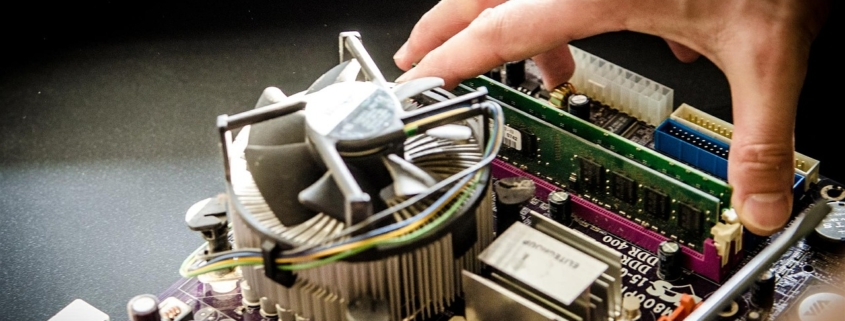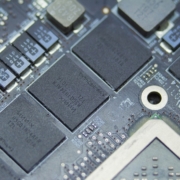What is ROM?
ROM, which stands for read-only memory, is a type of memory that cannot usually be changed once it has been created. This is essential for many electronics today, from computers to microwaves to smartphones. Just about anything that needs to boot up a program to turn on will have ROM installed for that purpose.
What does ROM mean?
ROM is a type of memory that is non-volatile and where modifications are difficult, if they’re possible to do. Non-volatile means that the information is not going to be deleted if the device is turned off. This type of memory is typically used to store firmware that is unlikely to need to be updated, or that is not intended to be updated. Some newer types of ROM have been created that do allow some modifications, but in these cases, it is either very difficult to modify the ROM, or it will take a very long time to accomplish. There is typically a limited number of times that ROM can be modified and, in most cases, it will require special equipment.
How Does it Work?
 ROM was originally created to use in computers as a way to start the computer so it could load the hard disk and the operating system. Eventually, the ROM included the full BIOS for the computer, allowing the computer to turn on and load the operating system. ROM typically contains just the necessary information to get everything started and to allow the computer or device to access other types of memory, like the hard disc, to run properly. When the computer or other device is turned on, the ROM gives it the information needed to start working, so without the ROM, the device would not be able to run.
ROM was originally created to use in computers as a way to start the computer so it could load the hard disk and the operating system. Eventually, the ROM included the full BIOS for the computer, allowing the computer to turn on and load the operating system. ROM typically contains just the necessary information to get everything started and to allow the computer or device to access other types of memory, like the hard disc, to run properly. When the computer or other device is turned on, the ROM gives it the information needed to start working, so without the ROM, the device would not be able to run.
ROM Versus RAM
ROM and RAM, or random-access memory, are often confused. RAM is volatile memory, where ROM is non-volatile. With RAM, if the device is turned off, all the information is deleted. With ROM, if the device is turned off, the information is still on the memory and able to be accessed when the device is turned on again. RAM chips can read data faster than ROM, but because the information is deleted when the device is turned off, ROM is needed to allow the device to turn on and boot properly.
Types of ROM
ROM, as mentioned, is typically read-only. However, there are ROM chips that can be modified, though there are limits to this. The different types of ROM that are standard today include MROMs, PROMs, EPROMs, and EEPROMs. It can be modified and how difficult the modification is to do will be different for each type of ROM.
- MROM – Also known as masked ROM, this is the original type of ROM and is read-only. These cannot be modified, so once the information is on the ROM, it cannot be changed by anyone. To boot a device differently, it would be necessary to replace the ROM with a different one.
- PROM – Programmable read-only memory, or PROM, is a type of ROM that can be modified one time only. Programmers can purchase this without any information on it, then use specialized equipment to put their own information on it. Once they have put the information on the ROM, it cannot be changed or replaced.
- EPROM – This type of ROM, erasable and programmable read-only memory, can be erased and modified by users. However, it needs to be exposed to UV light via special equipment for up to 40 minutes for the information to be erased. After that, the ROM can be modified with new information. Most of the time, there is a limit to how many times this can be done.
- EEPROM – EEPROM, also known as electrically erasable and programmable read-only memory, is a type of ROM that can be erased and reprogrammed electronically. Erasing is typically done one byte at a time, so the process can be very slow. However, this is the easiest type of ROM to modify, and modifications can be done thousands of times before the ROM no longer works.
Examples of How ROM is Used
Most people are familiar with ROM being used on the computer. It works to load the BIOS information so the operating system can start whenever the computer is turned on. However, ROM is 
Custom ROM Options
Some types of ROM, like the EEPROM, can be modified electrically, which makes them easier to modify. A user can then change the information on them to make the device work the way they prefer by using special programs. Custom ROMs are commonly seen in smartphones as they give users root access and allow them to add or subtract features on their phone. The custom ROM programs are designed to change the information on the ROM inside the smartphone. Some popular custom ROMs that are available today can get rid of some preinstalled software on smartphones as well as add more customization options that users can take advantage of. There are a variety of options for custom ROMs to modify the ROM built into the smartphone, so anyone can use these to change how their smartphone works and the features they can use.
ROM is essential for most devices today. While it is intended to be read-only, some types can be modified, allowing users to adjust the information to meet their own preferences. This type of memory is used in many devices, including microwaves, dishwashers, smartphones, and anything else that needs to remember how to work if it’s turned off and back on again.
- About the Author
- Latest Posts
Claudia is a senior editor and contributor to Biteno GmbH. She loves to review new technology and enjoys travelling in her free time.



